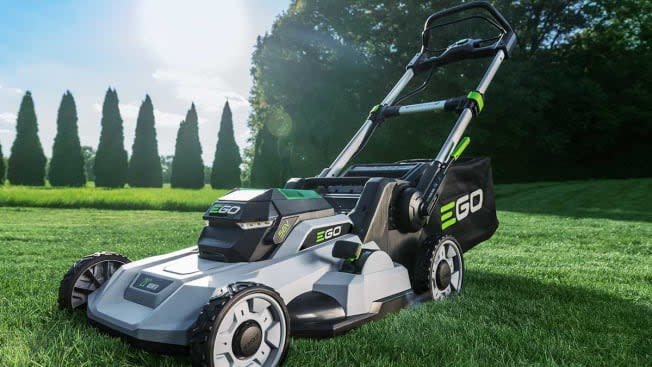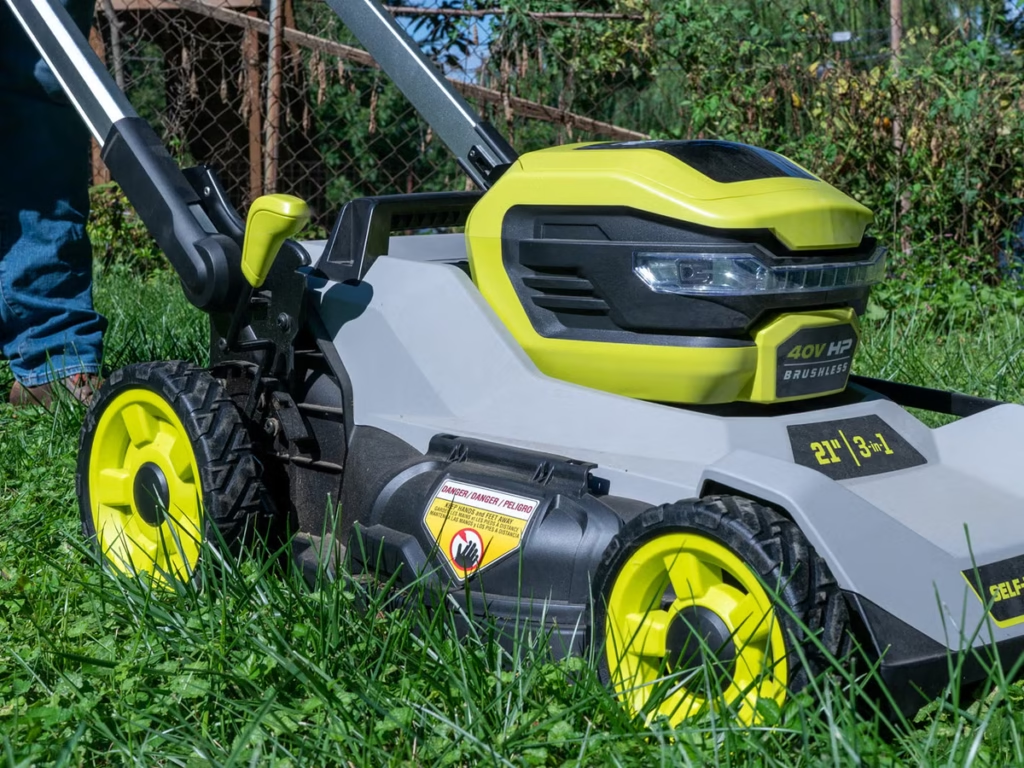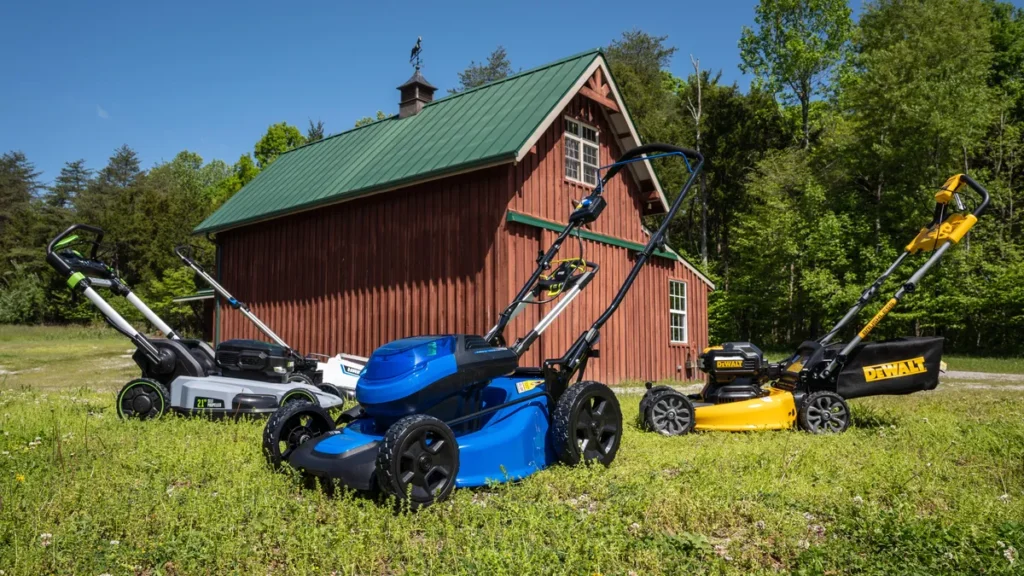Battery-powered lawn mowers have surged in popularity, offering quieter, eco-friendly alternatives to traditional gas-powered models. However, they’re not without their drawbacks. This article explores the potential downsides of battery-powered lawn mowers, helping you make an informed decision before investing in one. While these tools boast numerous advantages, understanding their limitations can help ensure they meet your specific needs.
1. Limited Run Time
One of the most common complaints about battery-powered lawn mowers is their limited run time.
- Battery Capacity: Most battery-powered mowers operate between 30 and 60 minutes on a single charge. For larger lawns, this can be a significant inconvenience.
- Interruptions: If the battery dies before you finish mowing, you must wait for it to recharge or have a backup battery ready.
- Impact of Grass Conditions: Thick or wet grass can drain the battery faster, reducing efficiency.
For homeowners with expansive properties, these time constraints may pose challenges, leading to incomplete mowing sessions.

2. Long Charging Time
The recharge time for batteries can be lengthy, depending on the brand and model.
- Charging Durations: Most batteries require 3–5 hours to charge fully, while fast-charging batteries still take over an hour.
- Inconvenience: Unlike gas-powered mowers, which can be refueled in minutes, battery-powered models may delay yard work.
- Planning Required: Forgetting to charge the battery after use can result in frustration the next time you need the mower.
This charging time makes it crucial for users to plan their mowing schedules carefully.
3. High Initial Cost
Battery-powered lawn mowers typically have a higher upfront cost compared to their gas-powered counterparts.
- Purchase Price: Many models cost significantly more than traditional mowers.
- Replacement Batteries: Batteries have a limited lifespan and can be expensive to replace, adding to the overall cost.
- Additional Accessories: Some mowers may require additional purchases, such as backup batteries or special chargers.
While the long-term savings on fuel and maintenance may offset the initial investment, the upfront expense can deter budget-conscious buyers.

4. Reduced Power for Tough Jobs
Battery-powered mowers often lack the power required for challenging tasks.
- Thick Grass: Struggling with dense, overgrown, or wet grass is common for these mowers.
- Uneven Terrain: On hilly or uneven landscapes, battery-powered models may perform less efficiently.
- Blade Efficiency: In comparison to gas mowers, the cutting power of battery mowers may falter in demanding conditions.
For homeowners who frequently face tough mowing jobs, the reduced power can be a significant downside.
5. Limited Lifespan of Batteries
Batteries in lawn mowers have a finite lifespan, leading to eventual replacements.
- Cycle Limits: Most batteries last for 300–500 charge cycles before their performance starts to decline.
- Costly Replacements: Replacing a battery can cost as much as one-third of the mower’s original price.
- Performance Decline: Over time, the battery’s ability to hold a charge diminishes, reducing mowing efficiency.
Proper battery care can extend its life, but eventual replacement is inevitable.
6. Environmental Concerns
While battery-powered mowers are considered eco-friendly, their batteries pose potential environmental issues.
- Battery Disposal: Improper disposal of lithium-ion batteries can harm the environment.
- Resource Extraction: Mining for battery components like lithium and cobalt can have ecological and ethical impacts.
- Recycling Challenges: Battery recycling facilities are limited, and not all parts can be recycled.
Consumers seeking a truly sustainable option must consider these factors when evaluating battery-powered models.

7. Weight Considerations
Though often marketed as lightweight alternatives, battery-powered mowers can still be heavy.
- Battery Weight: The inclusion of a large battery adds to the mower’s overall weight.
- Maneuverability: Heavier mowers can be harder to push, especially for individuals with limited strength.
- Comparisons: While they’re lighter than many gas models, they can still be cumbersome compared to corded electric mowers.
This weight can make mowing less enjoyable, particularly for users seeking ease of use.
8. Limited Availability of Replacement Parts
Finding replacement parts for battery-powered mowers can sometimes be challenging.
- Brand-Specific Batteries: Many brands use proprietary battery designs, making it harder to find compatible replacements.
- Short Product Lifespans: Some models may be discontinued, limiting access to spare parts.
- Service Availability: Repair centers for certain brands may not be readily available in all regions.
These factors can lead to frustration for users needing quick repairs or replacements.
9. Performance Degradation in Cold Weather
Battery performance often decreases in cold temperatures.
- Reduced Run Time: Cold weather can shorten battery life, requiring more frequent recharges.
- Charging Issues: Batteries may take longer to charge or fail to charge altogether in freezing conditions.
- Storage Concerns: Improper winter storage can further degrade battery health.
Homeowners in colder climates must take extra precautions to maintain battery efficiency during winter months.

10. Noise Level Misconceptions
Although quieter than gas-powered mowers, battery-powered models still generate some noise.
- Motor Noise: The electric motor can produce a noticeable hum, especially at higher speeds.
- Blade Noise: Cutting through dense grass can amplify the sound.
- Expectations: Users accustomed to silent operations may find the noise disruptive.
While less noisy than gas mowers, they aren’t completely silent, which may disappoint some buyers.
11. Limited Mowing Width
Battery-powered mowers often have smaller cutting decks compared to gas models.
- Time-Consuming: Narrower cutting widths require more passes to cover the same area.
- Less Efficient: For larger yards, this can significantly increase mowing time.
- Design Constraints: To maintain lightweight designs, manufacturers often opt for smaller decks.
This limitation may frustrate users looking for faster mowing experiences.
12. Frequent Maintenance Requirements
Battery-powered mowers still require regular maintenance to perform optimally.
- Blade Sharpening: Dull blades can affect cutting performance and drain the battery faster.
- Battery Care: Proper storage, charging habits, and periodic checks are necessary to prolong battery life.
- Cleaning: Grass clippings and debris can accumulate, requiring regular cleaning.
While simpler than maintaining gas mowers, these tasks still demand time and effort.

13. Dependency on Electricity
Battery-powered lawn mowers rely on electricity for charging, which can be a drawback.
- Power Outages: Mowing is impossible if the battery isn’t charged and there’s no electricity available.
- Energy Costs: Frequent charging can increase electricity bills, albeit minimally.
- Sustainability Concerns: The environmental impact of electricity generation varies depending on the energy source.
This reliance makes these mowers less appealing to users in remote or off-grid areas.
14. Limited Variety for Specialized Needs
The range of battery-powered models may not cater to all users.
- Specialized Features: Advanced features like mulching or self-propulsion may be limited in battery models.
- Fewer Options for Large Yards: The majority of battery-powered mowers are designed for small to medium-sized lawns.
- Limited Accessories: Accessories like bagging attachments may not be universally available.
These limitations can make it challenging to find a model that meets specific requirements.
15. Higher Long-Term Costs
Despite savings on fuel, battery-powered mowers may have higher long-term costs.
- Battery Replacements: Over the mower’s lifespan, replacing batteries can add up.
- Upgrades: Users may need to purchase additional batteries or chargers for convenience.
- Durability: Some models may not last as long as their gas-powered counterparts, necessitating earlier replacements.
Careful consideration of these factors is essential when evaluating the mower’s total cost of ownership.

Why Consider Nicosail for Your Lawn Care Needs?
Despite the potential downsides of battery-powered lawn mowers, selecting a high-quality brand can alleviate many concerns. Nicosail stands out as a reliable choice for homeowners seeking efficiency, durability, and convenience in their lawn care equipment.
- Exceptional Battery Life: Nicosail mowers feature advanced battery technology, offering longer run times and quicker recharge periods.
- Superior Build Quality: Crafted for longevity, these mowers are built to withstand tough conditions while maintaining peak performance.
- Innovative Features: From adjustable cutting heights to ergonomic designs, Nicosail delivers user-friendly solutions tailored to diverse needs.
- Sustainability Focus: With recyclable batteries and eco-conscious manufacturing processes, Nicosail ensures an environmentally friendly approach.
Choosing a reputable brand like Nicosail can mitigate many of the challenges associated with battery-powered lawn mowers, making them a worthwhile investment for your lawn care routine.
Conclusion
Battery-powered lawn mowers offer a modern, eco-friendly alternative to traditional gas models but come with their share of downsides. By understanding these limitations—such as limited run time, charging needs, and higher costs—you can make an informed decision about whether this type of mower suits your lawn care needs.
For those seeking a high-performance, reliable option, Nicosail provides a balanced solution that addresses many of these challenges, ensuring a smooth and efficient mowing experience.




